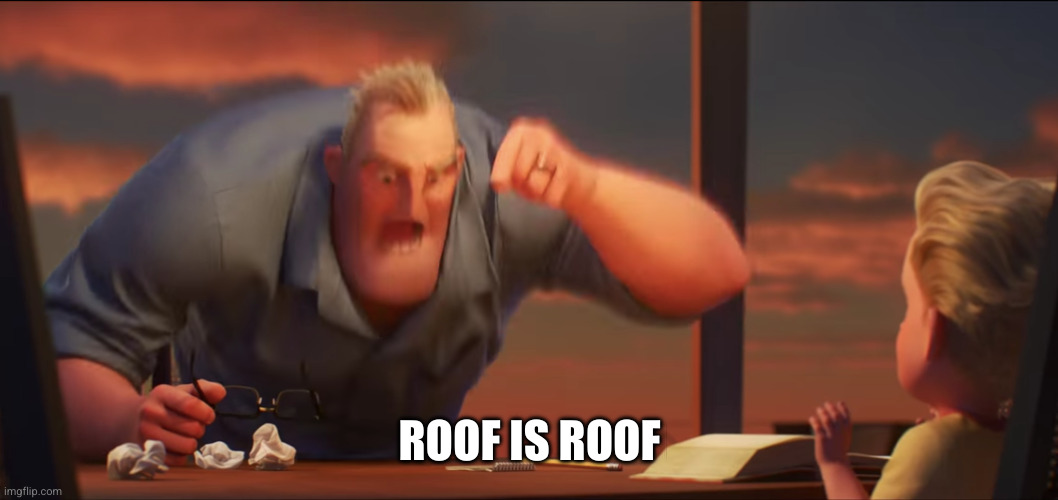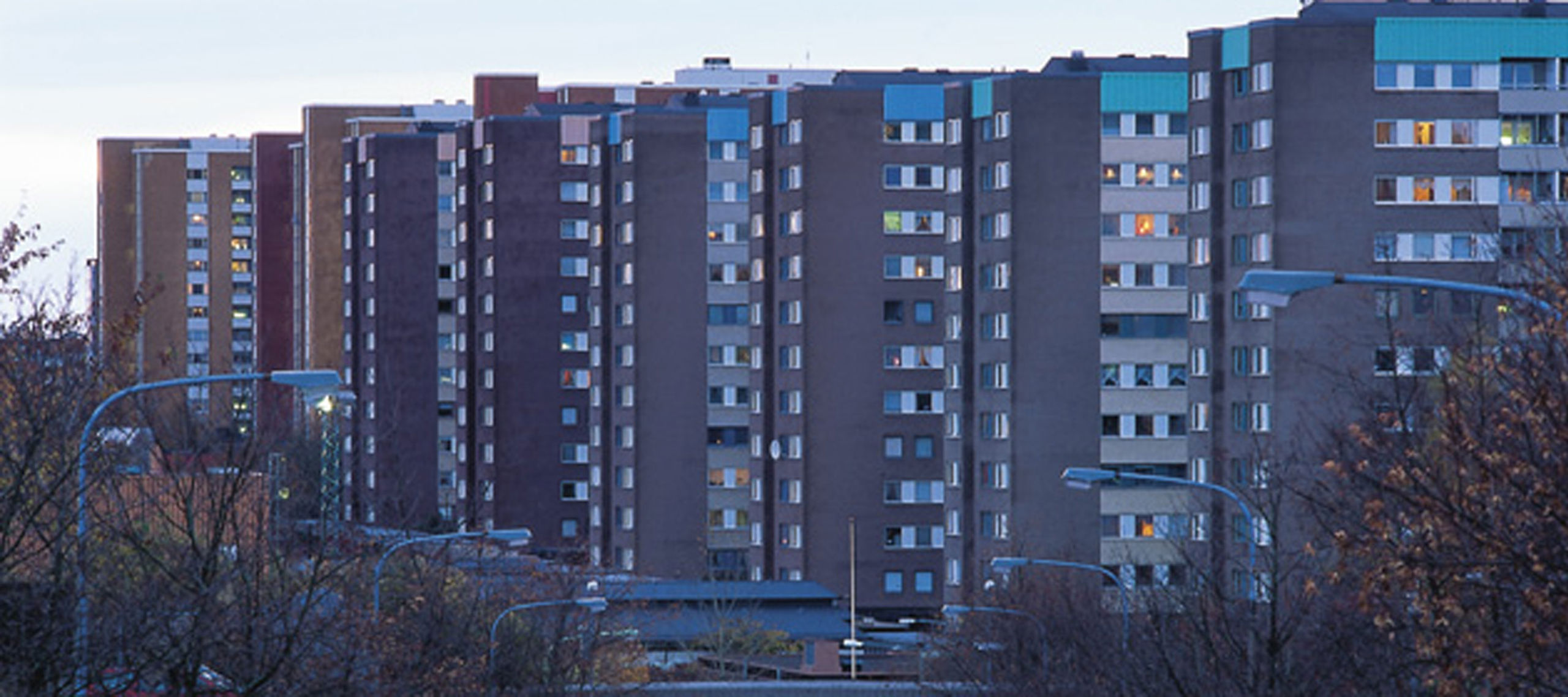Must not know about asphalt yet…

I’m sorry, is this asphalt over baked paving stones? And if so, why?
Or is this a pothole filled up with stone? And if so, why?
It is indeed paved over. I’m sure there are reasons, but probably not good ones given potholes like this. Aside from initial cost, for large vehicles+higher speeds. IMO seems a bit like gluing carpet over wooden floorboards (which is another anger-inducing thing, especially if you’ve lived in a house with a carpeted bathroom).
Not Just Bikes has a video on brick roads in the Netherlands (the bricks being called Klinkers, video called
Natural Handcrafted Artisanal ... Streets?!), how they allow easier maintenance/re-use, brick designs instead of painting the surface after, worn klinkers used in historic areas etc.Oh yeah, klinkers (if they’re baked clay) or the much less inspired sounding betonstraatstenen (concrete street stones) definitely have their benefits, but that video really skips over what a literally backbreaking job it is to pave a street like that, or how slippery these stones get when wet (less so for concrete or textured baked clay).
It’s mandatory to do anything over 2 hours of bricklaying by machine now, but that requires packaged stone. And packaging stone is even worse than relaying it from a pile, so you end up loading it into a truck, shipping it off for packaging and then moving it back.
You can design around that, most of the time, but we haven’t been doing that, so lots of handwork remains, which is not great for your health.
Of course, running asphalt over a street like this gets you the worst of both worlds, and its begging for potholes since the two materials match up really poorly. You do occasionally see it in the Netherlands on old roads on top of dikes that were “modernized” in the 70s and 80s.
(Edit: it’s actually more a synergy of shittyness, because you can’t really reuse most of the asphalt, because you don’t brickdust in it, and you can’t reuse the bricks because there’s asphalt on them)
Source: am dutch, took a year of civil engineering, ended up doing lots of safety and regulatory stuff for roadworks.
Since you have expertise in this maybe you can answer this question for me.
Do brick or stone roads last longer than asphalt or concrete roads?
It seems to me like they should, given the higher hardness of the material and the presumably greater resistance to freeze/thaw cycles. I have also seen a few brick roads near me that I can only imagine have gone a very long time with no maintaince (as I think the government here would rather cover it in asphalt than try to work with the bricks). The ground underneath the bricks has shifted over time forming depressions in the path that car tires take, but it is still fine to drive over at low speeds, as the slopes are smooth unlike the holes that form in asphalt.
I’ve tried googling this before but haven’t been able to find a straightforward answer as to how long a road like that can go between rounds of maintenance.
Do brick or stone roads last longer than asphalt or concrete roads?
That’s a solid “it depends”. And in this case, it depends on the definition of “lasting” and the definition of “road”.
Klinkers are near immortal, but they’re laid on what we call a “street layer” of 3cm of compacted, specifically graded sand, on top of some 25cm of less expensive sand. That sand can shift, compress and ruin the stability of the bricks. That usually happens due to heavyweight transport, or external factors (settlement of the soil underneath, tree roots, etc). If you run just passenger cars in a suburban area on steady ground, it could last 50 years. If you supply your stores on a road like that, it’s more like 10 years. But you can remove the brick, regrade/replace the sand and rebuild it from mostly the same bricks. Concrete bricks don’t last as long, and they break more when removed/packaged/relaid, I don’t really know the numbers.
Asphalt is different. Assuming we’re talking about a road that could also be made in bricks, asphalt has a surface layer of some 3-5cm, then between 10 and 20 cm of underlayers in layers of around 5 or 6cm. Then some 20-30cm of gravel, and up to half a meter of sand. That top layer lasts something like 10 to 15 years, and it suffers most from frost/thaw, UV light, etc. You don’t have to replace al of it at once though, you can patch it.
The underlayers generally fail due to traffic weight, but that can be 2, 3 or maybe even 4 cycles of surface layer replacement later. Generally, for busier (non high-way) roads, they replace the surface layer twice and the third time they do parts of the underlayers, or all of it, depending on damage. Asphalt can be 80 or 90% recycled though, but it takes quite a bit of heat (something like 3 to 6 cubic meters of gas for each ton of asphalt).
So, all in all, not all brick roads are equal, not all asphalt is equal. And “how it lasts” is a complex question too. It’s also a tough comparison, because we generally don’t build roads for the same purposes. If it’s very busy, we usually don’t use bricks.
Thanks
Our driveway is made from the same kind of thing, rain never pools on it as it goes down the gaps
We pave over brick in New Orleans too. Not sure why
It’s a lovely street made of brick pavers that has been paved over with asphalt because it provides a smoother ride for vehicles and pleasant aesthetics are for losers.
I’m sorry, is this asphalt over baked paving stones? And if so, why?
This is what happened in a lot of European cities, they just paved over the cobblestone. I’ve seen something similar in a especially deep pothole in my neighborhood. Felt like a glimpse into the past.
It was the cheapest way to improve noisy cobble or other stone roads with fancy newer asphalt technology. Until it got patchy, then it gets expensive after all…
At least he is forming concrete opinions
He’s being a massive brick about it tho
BLOCKed
Ba Dum Tsss
Don’t tell him that.
Don’t know why, but I totally get this. Like, 100%, I just have it as a general feeling of disgust that I can ignore.
Edit: specifically cement blocks like the one pictured. That exact shape and texture of cement is the worst for me.
I understand the distaste for the aesthetics. But it’s a pretty inarguably better material from a structural, cost, sound blocking, etc. standpoint.
Don’t get me wrong, I love red brick, and personally want a red brick house, but I also recognize the sheer practicality of concrete blocks and would probably pick that with a brick veneer if I actually had to pay for it to be built new.
That’s literally how many German private houses are built: Autoclaved aerated concrete with a brick cladding. Looks nice and provides a lot of thermal insulation.
Your MOM looks nice and provides a lot of thermal insulation!
Good on her for taking care of herself and her home.
Oh no, far more visceral. Nothing about the aesthetics.
The brick pictured makes my hands feel dry and papery. That’s from when I was a kid, so I know what that’s about. Buuuut…
There was a period where cement was used on wire frames to do sculpture - makes me want to gag. Fully repulsive to me. A tree made from cement angers me. It’s all trash to me, zero redeeming elements.
A large cement column in a building under construction? I intentionally avoid it so as not to touch it. They smell bad, too. Once painted, I’m totally fine with them.
Dry cement powder? I would rather touch fire.
It’s a sensory processing thing. Can’t explain it more than that I guess.
I find differences in how people react to sensory inputs fascinating. I don’t have any problems with concrete or concrete powder. For me hell on earth are lenticular prints (not viewing them, but touching them) even hearing someone glide their finger over one makes my skin crawl
Huh. Yeah, I have no problem with that, but I get you.
There’s a kind of not refined pulp paper stock that was used to make cheap paperbacks, I’ve only seen it in older books from the 50s-70s, that does that to me. Only ever ran into it a few times, but if my fingernail touches it, it’s worse than being electrocuted. Full body shivers and chills. Even thinking about it tenses me up.
You got that ASMR? Seems like there’s some overlap between things like this, like you have some things you can’t stand, some that send you into a trance, and they’re infuriatingly close sometimes.
I feel you on this. Helping with the family’s construction projects still makes me writhe years later.
I hate bricks.
I went to the London suburbs and still think it was the ugliest building style ever. Bricks everywhere, bricks on walls separating houses, brick train stations, brick city buildings, brick houses… Bricks bridge ?
I just can’t stand those brick based cities. I think it’s just as bad or worse as going full on concrete.
But, do you mean like red clay bricks?
I mean specifically cement blocks like in the picture. I’m totally down with red clay bricks.
I just find full brick based architecture absolutely horrible.
So if everything is red bricks I think it’s ugly. And in London suburbs j felt like everything was made of bricks. I remember taking a suburb train and being shocked that almost every single building had those red bricks.
To each their own I guess but full brick style is not my thing for sure.
This post kinda feels like op is ridiculing autism with a probably made up story. Hyperfixation is a thing with autists but they don’t only talk about one topic and they shut up from time to time too. Autists are more than their hyperfixations, they’re humans.
thought the point is that the kid is right and concrete does suck
Nah concrete is dope. Fight me about it.
Yeah, I actually kinda like brutalism
Maybe, I really couldn’t tell that. To me this was a story about someone’s autistic brother who had multiple mental breakdowns with rampaging construction sites and injuring other classmates. ¯\_(ツ)_/¯
I wouldn’t expect many people to know about concretes dangerous environmental impact through released CO2 during production and it is not mentioned in the post either.
Don’t forget the released CO2 while it cures too! Humanity really needs to use a lot less concrete
I agree. Wood is clearly the superior material.
Wood is dogshit bro fuck you smoking
Current building codes allow the construction of wood frame buildings up to 18 stories tall. You need to expand your knowledge of wood construction beyond what you learned reading The Three Little Pigs.
Man, 18 stories sounds like a bit too much even if it’s not wood. I mean, I like the aesthetics, but not sure about how good high building are for the quality of life anymore
stockholm is building a whole-ass wooden district
Smoking wood
Concrete is literally building slop
It’s great tho
I had a learner on spectrum who physically attacked me for 2 hours because, after our classroom won the ‘Golden Trashcan’ Award for cleanest room, the Golden Trashcan was not real gold.
The only quote I remember from this was him screaming at me while gesturing at the trashcan, “That’s not a thing! That’s not even an animal!”
10/10, would teach again.
I hope you’re alright after that physical attack! Hope someone educated the kid on their autism and their actions too. I think I slightly understand the train of thought with the “it’s not an animal” argument though. I’m guessing the kid assumed that the word gold was reserved for actual gold unless talking about animals like the golden hamster or goldfish where it just meant gold colored :P
Edit: also sorry for sending this comment thrice, no idea how that happened
Also, there was no successful remediation of this behavior. I worked with him for 5 years and, while he did learn the academics, he never really adjusted well to our society.
Yep. He was we would be getting the precious metal. This was made very clear by him.
I hope you’re alright after that physical attack! Hope someone educated the kid on their autism and their actions too. I think I slightly understand the train of thought with the “it’s not an animal” argument though. I’m guessing the kid assumed that the word gold was reserved for actual gold unless talking about animals like the golden hamster or goldfish where it just meant gold colored :P
deleted by creator
You didnt have that one kid in any of your classes? A kid I went to school with had similarly deep feelings about evergreens over deciduous trees, and got in a fight with a Canadian kid after he started talking smack about maple syrup and maples in general. I dont think the Canadian wanted to fight, but he had on a Canadian flag shirt so the maple leaf was front and center, making him a target for the arborist. But it was literally trees all the time. Evergreens can photosynthesize year round so they are always giving us oxygen. Evergreen lumber is better for construction. Evergreen seeds are adapted to sprout after fires when there is more likely to be room for them to grow. Nonstop. Middle school is a weird time for a lot of folks and people on the spectrum are not exceptions.
Feels like the wrong community here for this screenshot
honestly I love bricks and hate concrete blocks.
btw what’s the most (not necessarily among these two) sustainable building material, lemmings?
Stone. It’s natural, subject only to the slow erosion of time.
Caves. We should all live in caves.
unfortunately there aren’t that many caves out there and it’s hard to build new.
It isn’t hard, just use dynamite
never been easier, in fact!
Yes, but most of us are going to die in climate change and water wars pretty soon.
Edit: im not saying it’s good I’m saying the silver lining is that there will be enough caves.
I’d bet wood is better since if you use it for construction and farm it you can theoretically use it as a carbon sink, and it’s renewable.
What’s the delta on mining and shaping stone vs lumber is the question
Well stone lasts forever barring someone turning big stones into little stones. So I think stone might still come out on top
While I’m a big fan of stone, I do have complicated feelings on the mining industry, so I’m not sure about how sustainable it is.
Honestly, whatever makes the most sense with the materials in the local area. And then I don’t mean what you can get from the local hardware store, but literally, what the earth in the area provides. If you have lots of clay, then brick would be best. If you have lots of big stones, then stone construction it’ll be. If you’re deep in the woods, then a wooden building would serve you just right. Maybe a combination of materials and techniques if you have options in the area.
Bonus points if you can build in a way that passively optimises for managing things like moisture and temperature.
Thisss! You don’t need to invent some crazy futuristic material when humans have been building sustainably for millenia. All you have to do is look into: 1. what material is avaible in the area? and 2. what enviromental factors do you need to take into account? If you’re building in a hot area, the house needs to be able to stay cool. If you’re building in a cold area, the house needs to be able to stay warm.
Adobe is the best of you live in the right environment for it
what?
This adobe, not the company
you definitely don’t want a subscription based building. oh wait
The mud bricks. They are BY FAR the cheapest to procure. No transportation fee because it’s right next to your house, and no materials fee because it’s free from the earth. It lasts decades with only minor patchwork repair needed. Anyone can do it and you can literally put up a house in a few days. It’s so good at insulation it hardly needs any AC or Heating. So your costs are absurdly low compared to any other building material. You can straight up put up a house for $10k
Cob and rammed earth are hard to beat if you’ve got the right environment for them
Hemp
Did you read that link before posting?
In comparison with other construction materials (aluminium, steel, even brick), concrete is one of the least energy-intensive building materials.[2]
Except it isn’t just about the energy intensity, but specifically the CO2 emission from the concrete process itself.
From the link’s sources:
The issue isn’t concrete or cement inherently but how much of is used. And it’s used because it’s either the most cost-effective material or just the only one able to deliver the required specs.
I thought the issue was sand/silica and the fact that we may exhaust the ressources to do cement eventually. It takes a lot of sand materials if I recall correctly ?
And not just any sand.
it’s so bad that people are literally stealing sand from beaches to sell under the table
I have a similar thing with flat roofs. They are terrible. When you are 5 years old, you already learn to draw houses with a pointy roof. The pointy roof has been invented about a 100 times in history, as people were looking for the best shape. The wave shaped roof tile with 2 waves per tile has been invented about 3 times in history as people were looking for the best shape. The advantages of a pointy roof over a flat roof:
- Rain flows off. Yes, you can give a flat roof a small inclination, but rain will not flow as well, and if your roof tilts a small bit during the decades, it can become horizontal again.
- Snow falls off, reducing the chance that the roof collapses under the weight of heavy snow.
- It is lighter and cheaper, as you can use thinner materials. This is because pointy is a stronger shape than flat.
- It gives more interior space.
- It allows more sunlight to reach the street.
- It has a smaller area-to-vloume-ratio through with heat can escape.
- Solar panels get a higher efficiency.
- It allows the roof to be made out of wavy roof tiles which provide the following advantages:
- Roofs designed with wavy roof tiles can be constructed when it rains.
- When a tile breaks, you can easily replace it, without having to cut it loose from the tiles next to it.
- Roof tiles do not fracture upon an uneven heat distribution. Meanwhile, the advantages of flat roofs are:
- If you design an apartment building, you can copy and paste the interior. (Thus less work for the architect.)
- A horizontal line is one segment less to draw compared to two diagonals. (Thus less work for the architect.)
- If a city has the same height restrictions for flat roofed buildings as for pointy roofed buildings, and the architect is too lazy to go to the city council to explain to them that that doesn’t make sense, the architect can design a building with more volume by making the roof flat. In other words: the only reason any architect would design a building with a flat roof is because they are either lazy or they have no idea what they are doing.
- It is lighter and cheaper, as you can use thinner materials. This is because pointy is a stronger shape than flat.
- It gives more interior space.
If you’re using lighter cheaper materials you’ll need all the added interior space for roof trusses, none of it will be livable space.
- It allows more sunlight to reach the street.
No, for the same amount of occupiable space the shorter flat roof blocks less light than a standard 10:12 or 12:12 roof
- It has a smaller area-to-volume-ratio through which heat can escape.
The greater surface area of a pitched roof means this is absolutely not true. The hypotenuse is always longer than either leg.
- Solar panels get a higher efficiency.
This one actually depends on latitude, equatorialy it’s better flat. And don’t forget that the minimum summer angle is limited by the pitched roof.
- If a city has the same height restrictions for flat roofed buildings as for pointy roofed buildings, and the architect is too lazy to go to the city council to explain to them that that doesn’t make sense, the architect can design a building with more volume by making the roof flat.
No it makes perfect sense. It goes back to your comment on letting sunlight through to the street. The maximum height is the maximum height so everyone gets the same amount of light.
In other words:
the only reason any architect would design a building with a flat roof is because they are either lazy or they have no idea what they are doing.this guy thinks their habitat is the only kind over the whole planet and can’t imagine people living in areas where snow load wouldn’t need to be considered.More non livable space would’ve been nice in my attic recently. I was trying to diagnose a potential leak, but the chimney is in the corner of the house, so not only do I have to walk across the rafters, but I have to squat down in the corner to even begin to be able to peak at the chimney pipe. But that’s a very niche scenario. I just sort of dislike the idea of void in houses, I think it should all be accessible to an extent.
If you’re using lighter cheaper materials No, I’m using the same materials. sloped roofs are simply a stronger geometry, allowing roofs to be cheaper and lighter by using less material.
No, for the same amount of occupiable space the shorter flat roof blocks less light than a standard 10:12 or 12:12 roof Incorrect. While the highest point of a sloped roof is higher than the highest point of a flat roof, the lowest point is lower. This means that for medium high sun angles sloped roofs provide won’t block the sunlight, while flat roofs do, and for low sun angles it is the other way around. However, there is not much sunlight anyway at low angles.
The greater surface area of a pitched roof means this is absolutely not true. The hypotenuse is always longer than either leg. That’s a basic math fail. The highest volume-to-surface-area-ratio is achieved in a spherical design, A slope roof that has a less than 45 degree angle is closer to a sphere.
Do you have any real disadvantages of sloped roofs?
snow load
Now I am kinda curious about how heavy snow can get.
I live in a snow-less flat-roofed region and the load capacity seems to be ~1.5 kN/m² [1]. So, even the cheapest compliant (maybe I should be checking govt. docs for compliance values) building not designed for snowfall should be able to manage 15cm of rain/snow.
Well, that is much lower than the 1m of snow that I would expect building up in case it really snows and it could get higher considering the parapet walls tend to ~1m high.
Snow itself can get pretty heavy, but more risky I think is repeated melting and refreezing. You can wind up with a large mass of ice that can really fuck up a roof or overhang.
Well, I have seen drains clog up so bad that the parapets act like a bowl and capture the ~1m of water with the roof still staying mostly intact (although seepage would have greatly increased there), so something other than my calculations is holding up that roof.
So I guess one would have to rely on the melting-refreezing to break down the roof, considering that without the phenomenon, the ice would be pretty fluffy and light.
The A-frame is peak house design in cold environments and I refuse to hear otherwise.
there’s a reason we have the stereotypical red house with white detailing here in sweden, that shit just fucking works
Have you ever tried to explain anything to the city council? They’re extra neurotypical popular people and will not be honest with you. You’ll say “I want nicer roofs because reasons” and they will completely make up reasons for not liking the better roofs. Maybe they’re being bribed by a subset of landlords, or they’re just racist, or they’re holding out for something unspoken in exchange that you should know about already.
People in political office are not refusing to change because they haven’t heard enough good arguments. People who don’t get the change they want are not just lazy.
Flat roofs are good for putting large unsightly equipment on, particularly AC units
They can also be a usable outdoor space just to hang out on.
Most modern flat roofs (at least in my neck of the woods) aren’t actually flat. They’re at an incredibly shallow pitch. In residential applications (after underlayment) we use high density foam slats that get put together in a grid formation, each piece gets slightly narrower on one end until they can properly fit under a piece of bird stop around the fascia. Before the bird stop goes on, the foam is sealed with a waterproof self adhering material that comes in huge rolls. When properly installed, they can last 15-30 years. Just as long, if not longer, than any shingle roof. There’s also high density polyurethane foam flat roofs that can be sealed and are able to last up to 50 years. Many commercial operations use these methods as well as hot tar mopping, which can basically last forever. The one drawback to flat roofs is load bearing difficulties in places that snow. I don’t know much about that but seeing as flat roofs are everywhere in the north too, it must not be too difficult to work around.
Don’t get me wrong, I love a good tile roof too, but there’s plenty of beautiful structures with flat roofs out there. And tile has considerable draw backs as well. Tile is incredibly heavy, they’re very fragile, they’re ludicrously expensive, and they’re expensive to maintain.
On the rain, no roofer is working in the rain, and tile roofs are vulnerable to rain during construction too. When it’s down to the plywood, you’re as likely to have rain troubles as any other roof. You can lay shingles and foam for flat roofs when you’re dried in too, but no one will if it’s more than a drizzle. Tile becomes an active danger in the rain because most tiles get really slippery in the rain
Replacing broken tiles is a bitch and a half, you have to carefully dance between tile joints and one slip of your foot (which is likely during repairs because tiles are slick and can become moldy/slimy when not maintained properly) you’re likely to break another tile, leading to more work and more chances of another broken tile. Even the process of removing a broken tile can break the tiles surrounding it
Tile in general is really finicky, high maintenance, and requires unique tools, methods, and skilled laborers that are capable of doing the work. That is by no means a bad thing but it’s really easy to get a flat roof that does the job perfectly fine. Tile, not so much

Roof decks are awesome though…
I like flat roofs because I want to be able to use a roof for a deck. Though, full disclosure, I don’t know how bad the leaking is and I don’t live in an area with snow.
Concrete is a major driver of CO2 emissions. Fuck concrete.
It’s a major driver because of how much it is used. It’s the building material, nothing else even really comes close. If we used bricks to the same degree, that would be the major driver.
There’s often no good alternative to concrete. There’s lots of newer less CO2 intensive cements and cement replacements out there though. Often comes at a cost on something else though.
Bricks would be much more efficient co2 wise, they don’t have the curing process that pollutes
They also put out a lot of CO2 and you’d have a hell of a lot of issues scaling the brick production to the same level. Not to mention all the othe associated issues that bricks have.
It’s just a poor replacement for concrete at the same scale. But that’s not to knock bricks specifically, since nothing really is a good replacement at that scale.
Best we could do is to not build as much or in such a big scale, but that has issues too.
You can bake bricks using clean energy but the chemical process for creating cement itself creates co2… Y’all down voting and never held a brick in yer lives
You can also cpature the CO2 and use it in chemical processes where it is needed. Bizarrely often they’re buying the CO2 for high price even though if capture methods were common we’d have loads of stock. And lower CO2 emission cement is already a thing that’s happening, but being able to scale brick production to meet even close to the scale of concret construction is nowhere near reality.
I like bricks as a facade element but it’s just not a good replacement for concrete on the whole. It will be much much easier to try and mitigate the issues concret has than to get bricks to the level of concrete construction globally.
Also I work in construction with both concrete and bricks and have been involved in mass production of both. But go off lol
An interesting document comparing both https://www.brick.org.uk/uploads/downloads/Clay-v-Concrete-Brick-A-Comparative-Guide-2022-v.3.f1675190626.pdf
>brick.org.uk
Reminds me of when in uni all these industry reps would come in and praise their material over everyone else’s with convincing arguments and next week someone from a competing industry would come in and do the same.
Don’t you have to fire bricks in a kiln? Surely that puts off some CO2?
You just cook them up electrically, I haven’t seen a charcoal kiln in ages
And where does that power come from
I wonder how the co2 from drying/making bricks compares
bricks made by burning clay aren’t that much better. Especially considering that you need more bricks for columns and other load bearing structures.
And the alternative would be building with wood which I believe would be even worse
Depends on what you want to do. Wood buildings have more limits in terms of height and structural load. But wood usually means much lower emissions and easier recycling of the building. Of course fire safety is another issue. In comparision to steel, wood does surprisingly well, as a thick wooden column can be burning on the outside, but maintain its load bearing capability on the inside. steel transmits the heat to its inside quickly and looses its stability faster.
Bullshit concrete is inferior to brick. The Romans used concrete. 😤
*Self repairing concrete, agree. Tho the cheap stuff we use today is ass
We should work on making self-healing and self-replicating concrete to become superior. 😌
are you trying to give buildings cancer
I think scifi nerds call that ‘grey goo’.
The irony is brick was thought of as cheap when buildings moved to it, from traditional stone blocks. The term “oh, that’s so Redbrick”, was a slam against something that had become cheap or slummy
modern concrete fuckin blows massive asses
Modern and brutalist architecture can have that effect on people. Fuck concrete, and fuck neo-imperialist colonial architecture.
Concrete is horrible for the environment and its fucked up global emissions of buildings and architecture. (Cement production alone constitutes 8% of global emissions, not considering its inefficiency in thermal lifecycles of a building and ultimate un-renewable waste). It is in fact not the best fit for every circumstance.
One shoe fits all architecture trends have effectively killed vernacular wisdom and climate conscious local innovation. Favoring “cheap” garbage that jacks up costs in other sectors, damages climate and ignores localized need, requiring complex, often power-hungry, solutions like extensive BAS to try and counterbalance their piss poor application.
(For those unaware modern buildings when all is said and done account for over 40% of global emissions. And the heating/cooling systems far outpace keeping the lights on in terms of energy consumption (something like 2/3 of the total buildings demands over time). Tackling that behemoth number is going to take a multifaceted approach but the importance of materials and place-specific design cannot be understated.)
- sincerely, someone whose installed one too many motors for automated blinds and slapdash bandaid HVAC solutions.
95% sure you’re the brother
I would happily smash concrete blocks in the early am- don’t threaten me with a good time!
Doesn’t concrete also absorb CO2?
Or was that cement
Shah also said that “cement carbonation requires very specific conditions” including humidity of between 40 and 80 per cent and open-air conditions.
“Submerged or buried concrete or concrete will not undergo carbonation,” he said, adding that “concrete carbonation happens at an extremely slow rate: an average of one to two millimetres per year.”
Shah added that he was “a bit frustrated with the IPCC using the word ‘sink’ because that gives the impression that it is beneficial.”
“Cement and concrete are not carbon sinks,” Shah said. “They are net sources [of CO2].”
Article: Cement and Concrete “are not carbon sinks” says Cambridge material scientist
Also: “Carbonation in concrete refers to the chemical reaction between carbon dioxide (CO₂) from the atmosphere and calcium hydroxide in the concrete. This reaction forms calcium carbonate and gradually reduces the pH of the concrete, which can lead to the corrosion of embedded steel reinforcement.”
So, not exactly a process you want to occur in your buildings or bridges. So if you’re hoping waiting around until it turns into limestone (if it’s not buried, submerged or sealed) it will probably mostly be demolished and long buried in a landfill somewhere potentially leaking toxins where it will never undergo the natural processes to absorb carbon anyway.
Beautiful in theory but impractical in mass scale execution. But certainly a good way to justify the continuation of a multibillion dollar industry. (This is not to say that there aren’t serious material scientists working on this problem, but a lot of it unfortunately is straight up greenwashing rather than advocating for reduction in initial footprint and investment in long-term sustainable alternatives.)
Thanks for the fact check!
Cement is an ingredient in concrete
Okay I am a big fan of brutalist architecture. Guess I am in the minority… I feel the philosophy behind it is just being wildly misunderstood.
I love brutalist architecture.
Can you share a little about the philosophy behind brutalism?
I think people often describe brutalism as cold, souless, dehumanizing, etc. But the principle behind is actually very humanitarian. They forgo grandiose decorations, embellishments, and instead choose to rather gain their form from function, and to maximize their functions so they can serve their inhabitants better. Many, many brutalist buildings were built as affordable, social housing during the post war era, when wealth inequality was perhaps the lowest in Europe.
And additionally, to me, because of how laid bare they are, they become an embodiment of transparency, and honesty that I wish our society can have more of.
(Don’t listen to me, there are many good articles/videos explaining brutalism way better than I could. Maybe this video on Habitat 67?)
Except a lot of the brutalist architecture in the UK looks like shit and the towers are shit, which is why they’re being knocked down. Those tower blocks are SUPPOSED to have shops and amenities inside them, but the British ones don’t, so they exist solely as shitholes nobody with a choice wants to live in.
It also doesn’t help that tower blocks very quickly became a dumping ground for local councils to throw unwanted tenants into, so troublemakers, those who can’t be housed anywhere else. The image of a tower block became one of high crime, social isolation and poor construction. Couple that with Grenfell Tower and you’ve got “Death trap” added to the list.
You are seeing on a glimpse of a huge, interconnected social issue that I don’t have the ability to competently articulate. Council housing obviously have a bad self-reinforcing image problem: no one wants to live in them, so only desperate people live there; because only desperate people live there, no one wants to live there. But that’s because the government fucked it up, it’s not an inherent attribute of social housing. UK had pretty good social housing post-war until Thatcher gutted it with things like Right to Buy.
If there is a solution to the worsening housing crisis, then social housing must be an integral part of that solution. So we must get building and normalize the image of social housing. I get quite mad looking at the current Labour government just sits doing nothing about it.
Grenfell Tower is its special kind of hell too. Sure the building itself wasn’t kept up to standard, but also the abhorrent response to the fire. The residents were told to STAY PUT IN THE BUILDING ffs.
So yeah, makes me feel bad that brutalist architecture gets bad reputation in the UK despite they themselves doing nothing wrong.
It’s not the social housing that’s the problem though, it’s specifically the tower blocks. Social housing by-and-large worked pretty well, with some pretty nice council housing being put up and people living in them without too much issue. The thing is, there’s a big difference between a socially isolated tower block and a council house in the suburbs, a lot of which was eaten away by Right-to-Buy because it turns out they were really nice houses so people wanted them. Almost nobody wants to buy a flat in a tower block.
The 'Stay Put thing for Grenfell Tower was actually good policy… When the tower was built. Each apartment acted essentially as its own fireproof box, so under the original design, staying put is actually the best policy to have, because you knew a fire was only ever going to exist in one of the boxes. It’s when those boxes are compromised that things become a problem, stuff like unauthorised knock-throughs and especially the flammable cladding (that was added later) on the outside of the building. It turned all those fireproof boxes into fireproof boxes except on one side, so when that cladding caught fire, it just set fire to all of the boxes.
The ‘Stay Put’ thing
wait, you have a problem with that point?? as you yourself already pointed out, the “fireproof box” thought was only true with the original design, after the renovation that’s simply not the case, saying fire would be contained is just plain wrong. what’s even the point of bringing that up. but let’s even just ignore that, there is a fire in the building, even if you think the fireproof should hold the fire, i don’t get why wouldn’t you evacuate the building just in case? what if you are wrong, can you take that risk when the consequence is so many people losing their lives?? and even if you thought initially that staying put was the correct thing for the residents to do, once you realize you don’t the fire under control, wouldn’t you start the evacuation as soon as possible? why was that policy in place for so long??
i mean i am absolutely not saying the firefighter should take majority of the blame. they did save many people’s live that day, and there’s just so much wrong with everything else, the housing system, fire regulation, there are too many things I can’t list most of them. but like, can’t you at least admit they were wrong on this one?
I don’t care enough to have an argument with you about it.
So. Form follows function.
But thanks for the summary!
see this would make sense if it wasn’t incredibly easy and cheap to make things look good, brutalism just ends up being needlessly ugly.
We built tons of cheap housing here in sweden in the 60’s, but it’s not all raw fucking concrete, we just put on some colours and veneers and made it look decent.

It’s just so BRUTAL. What more to saaay
Autist here, while brick houses are nice, I actually own a 100+yo one, they’re also not the most ideal material for anything bigger that a midrise.
Wanted to have better insulation for shits and giggles? We have a tool for that: putting proper insulation on the concrete.
Some people have some real bad ideas about insulation. No, the air gap in your brick building isn’t good. Air gaps are cheap and easy, not good. They do belong in certain strategic locations, but they can’t compete with the R-value of filling the space with blown fiberglass. Not even close.
Windows, too. The best, most energy efficient window on the market is at least 3 times worse than a few inches of blown fiberglass. Industry marketing has confused customers on that one.
Yeah, the intuition of wanting air in the cavity is a correct one. it’s just that what we actually want is a vacuum. This creates a thermal gap a d is why cups with vaccum keep shit warm/cold awesomely. We cant, realisticly achieve this so instead we shove shit into the walls to protect or little air gap from being tampered with. Fiber glass works OK, but foams work better.
I really wonder how he would feel about Roman concrete.
I love autism
deleted by creator






















